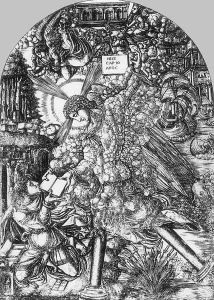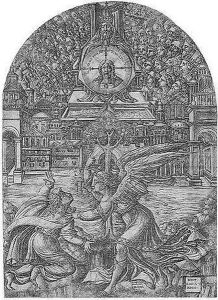Jean Duvet Paintings
Jean Duvet, also known as Jean Duvet de Langres or the Master of the Unicorn, was a French Renaissance engraver, goldsmith, and painter. Born in 1485 in Langres, Champagne, France, Duvet was a prominent figure in the world of art during the Renaissance era. Despite his significant contributions, many details of his life remain obscure, and he is primarily known through his remarkable and distinctive works of engraving.
Duvet's career as an artist spanned several decades, during which he developed a highly individual style characterized by intricate detail, complex allegorical and biblical themes, and a mastery of the engraving medium. His most famous work, 'The Apocalypse Series' (completed around 1555), is a testament to his skill and innovative approach to engraving. This series of twenty-three engravings is based on the Book of Revelation and showcases Duvet's fascination with prophetic and visionary subjects. His work in this series is notable for its dense composition, elaborate detail, and the use of light and shadow to create dramatic effects.
Aside from 'The Apocalypse Series,' Duvet produced numerous other engravings and was also known for his work as a goldsmith, although few of his creations in this medium have survived. His engravings often featured fantastical creatures, intricate landscapes, and detailed depictions of human figures, all of which demonstrate his deep engagement with the religious and mythological themes of his time.
Throughout his career, Duvet remained relatively isolated from the main currents of the Renaissance spreading through Europe, preferring instead to develop his unique artistic vision in his hometown of Langres. This isolation may have contributed to the distinctive style that sets his work apart from his contemporaries.
Jean Duvet passed away in 1561 in Langres. Despite the lack of extensive records about his life, Duvet's legacy lives on through his engravings, which continue to be studied and admired for their complexity, beauty, and unique insight into the Renaissance mindset. His work not only provides a window into the artistic innovations of his time but also reflects the broader cultural, religious, and philosophical preoccupations of the 16th century.






